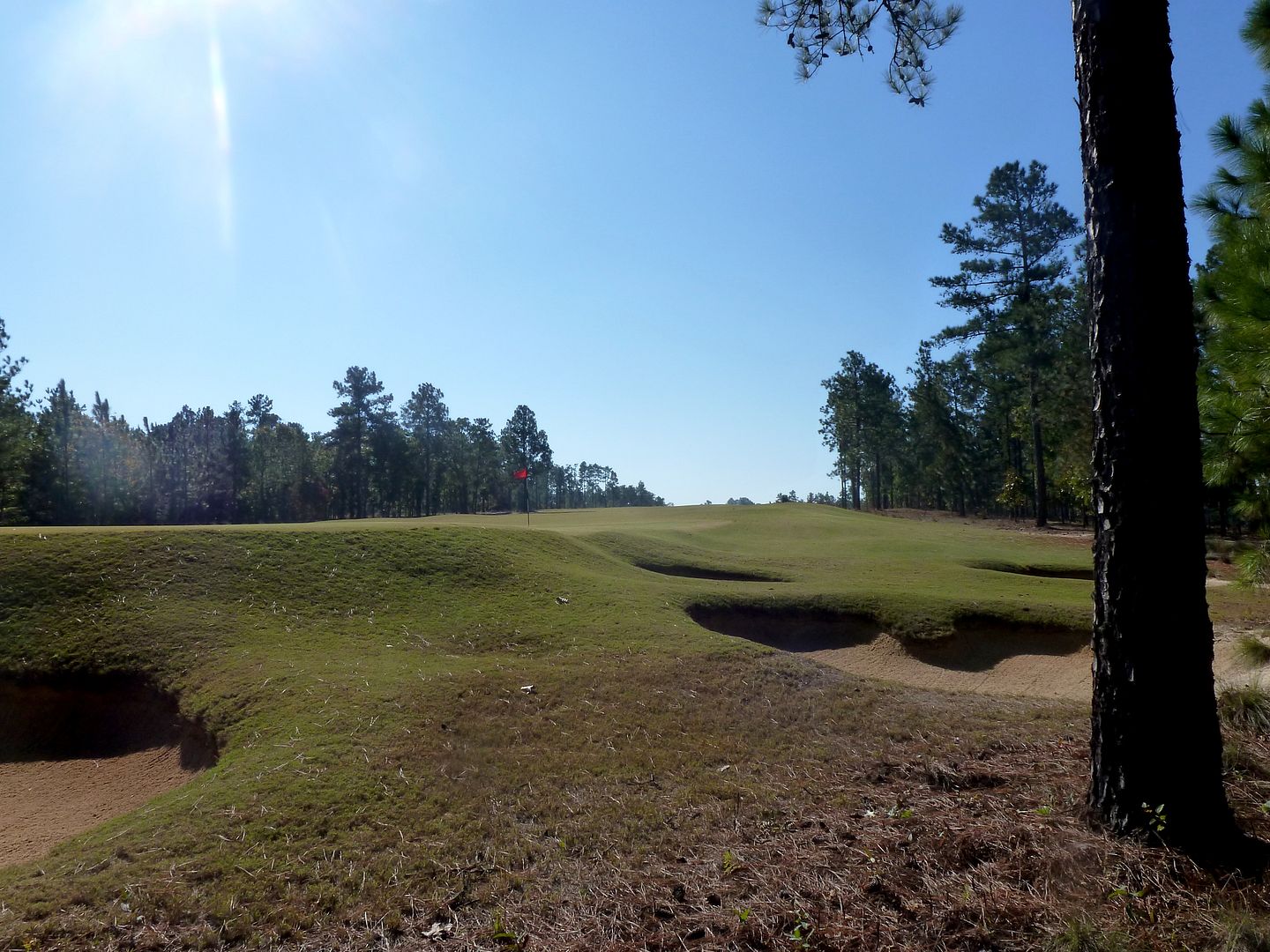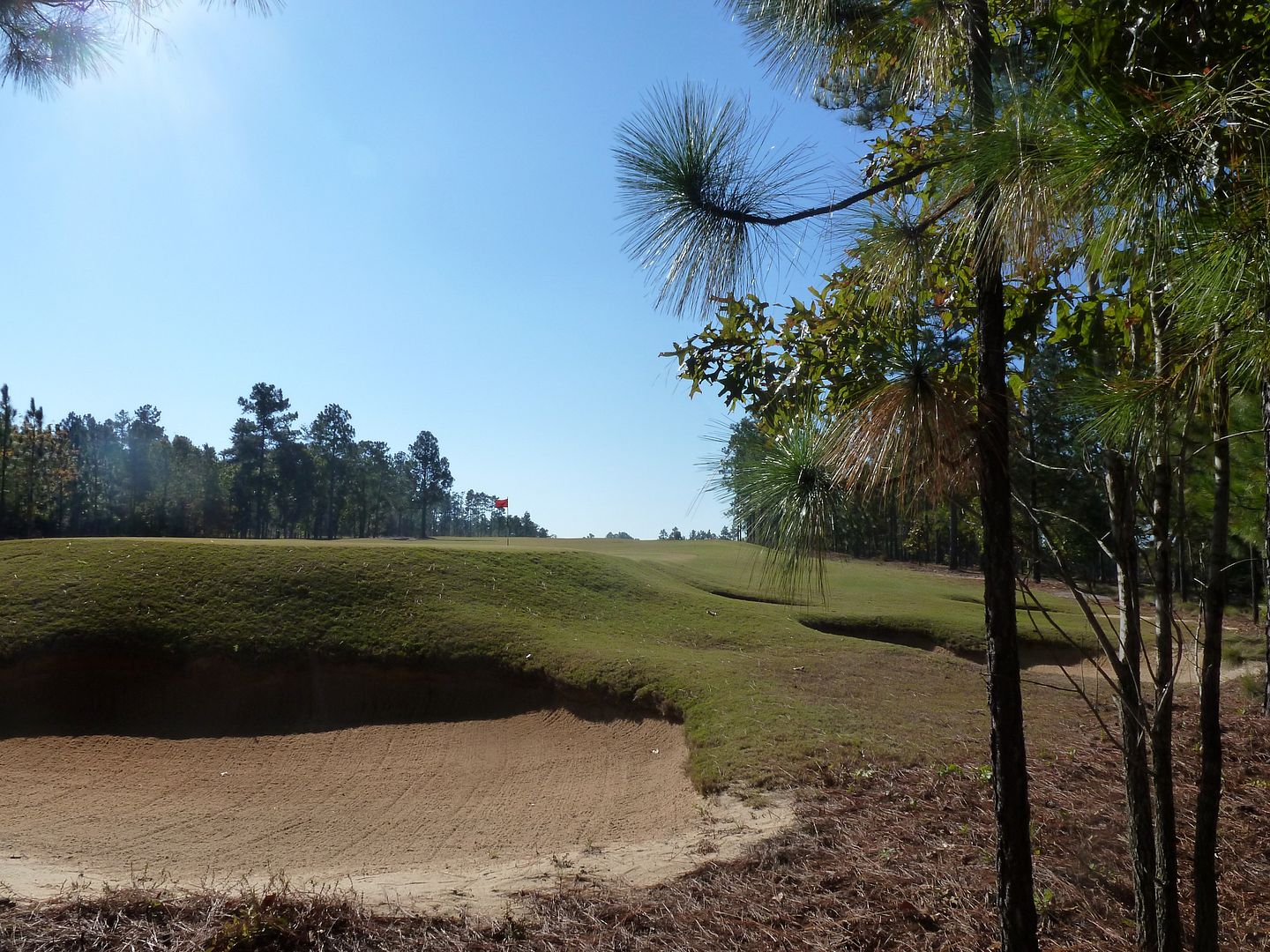Hole 4: Par 4, 440 YardsThis might be my favorite hole on the course. The hole sweeps significantly from right to left (no surprise there). The hole feels very natural on the land as the favorite dips and rises and slopes significantly to the left. Anything bailed-out too far to the right (it's a pretty long way right) will find some of the scrub/sand. In my limited experience you can be farther right than you think because of the slope of the fairway. Players that are too aggressive off the tee can find a hidden bunker guarding the inside corner of the dogleg.
The view from the back tee just hints at the shape of the hole, but it is a largely blind tee shot.
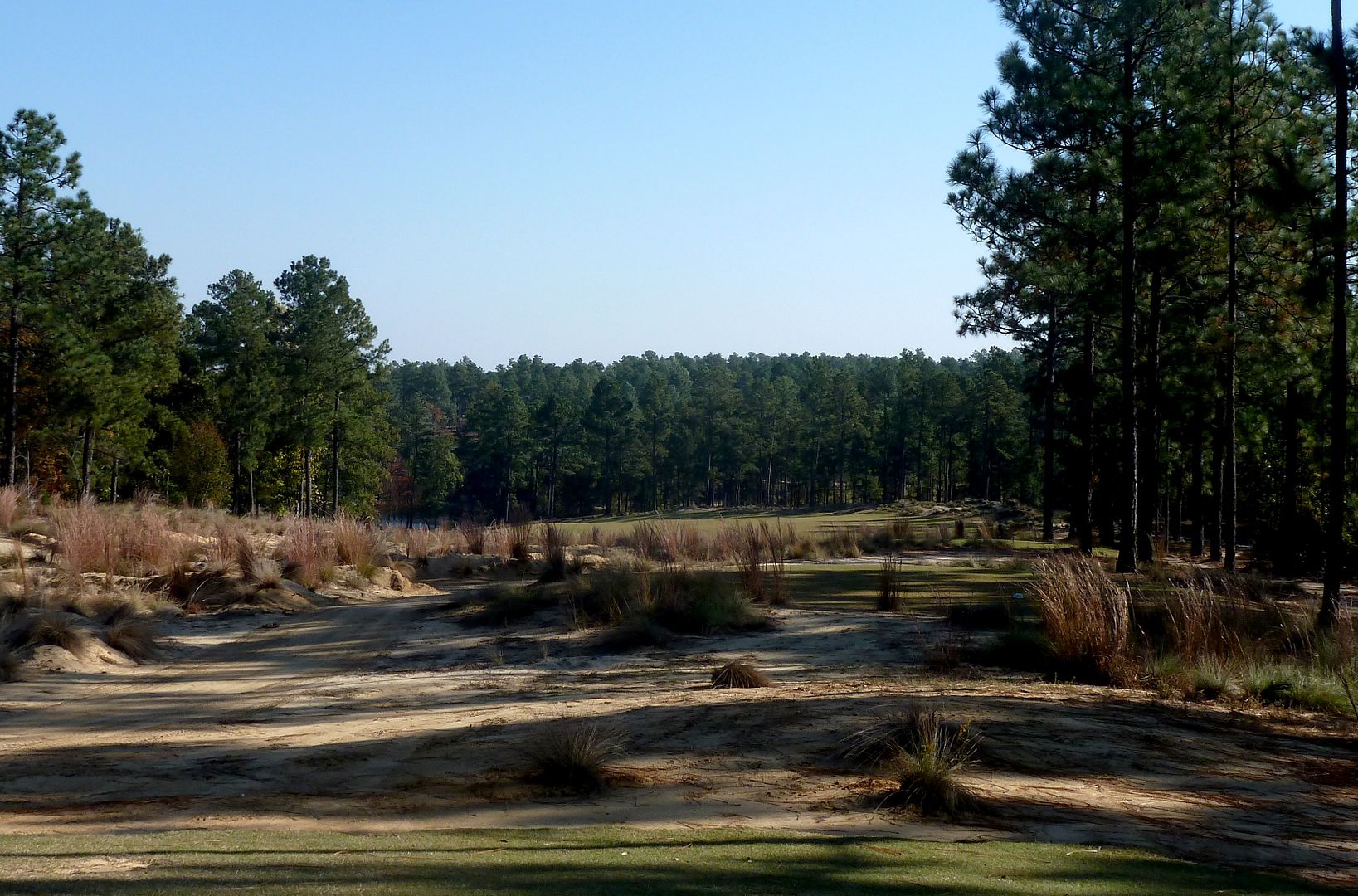
From the white tees one gets a clear look at the entirety of the hole, and a very nice vista of the green and water beyond.
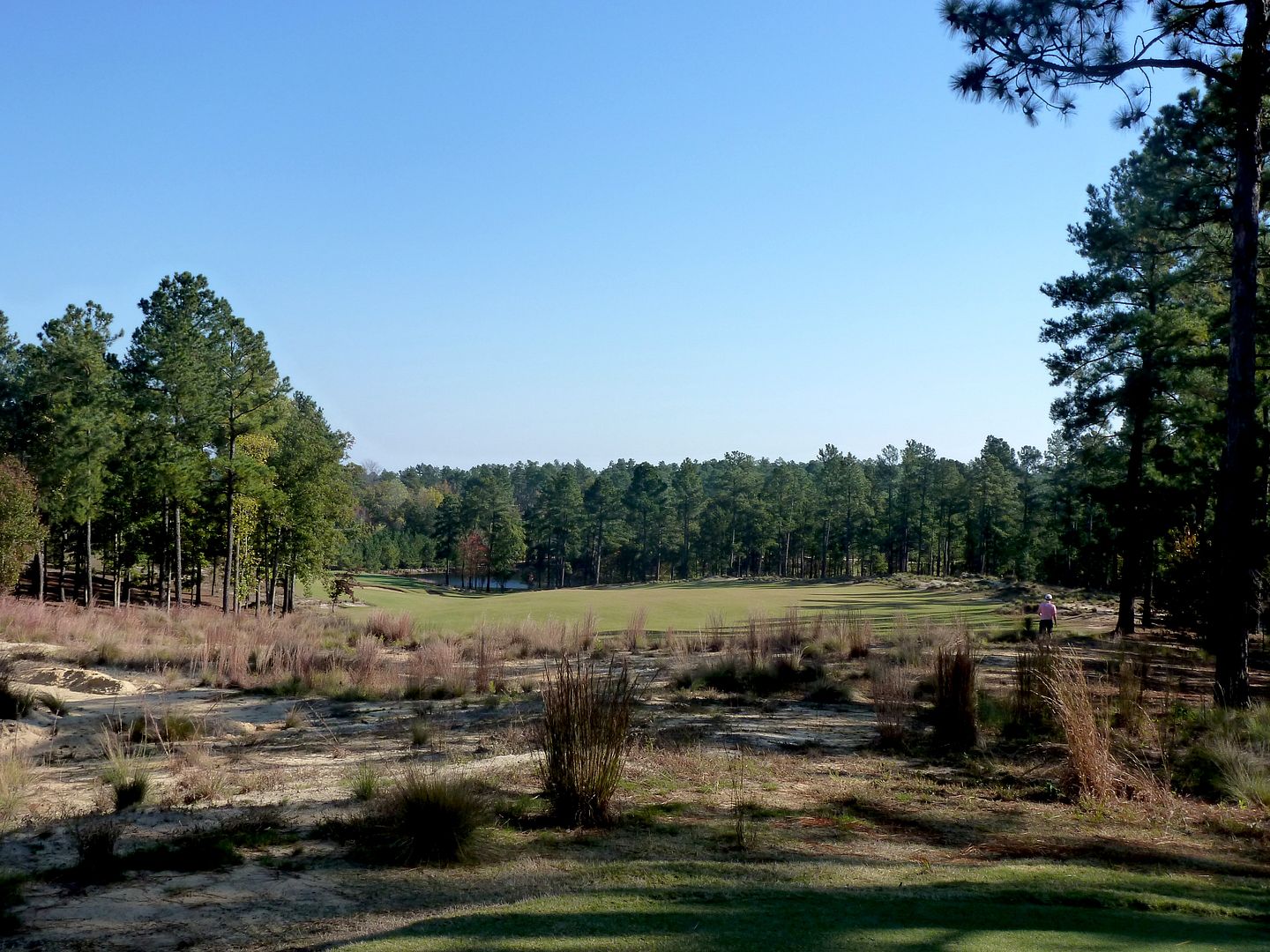
The approach should be nothing more than a short-iron or pitch, despite the length of the hole. After a draw was called-for off the tee, the second is best played with a little fade. Though there is no option to run the ball onto the green as a bunker and false-front protect the front of the green, shots can be played using the slope to the left of the green.
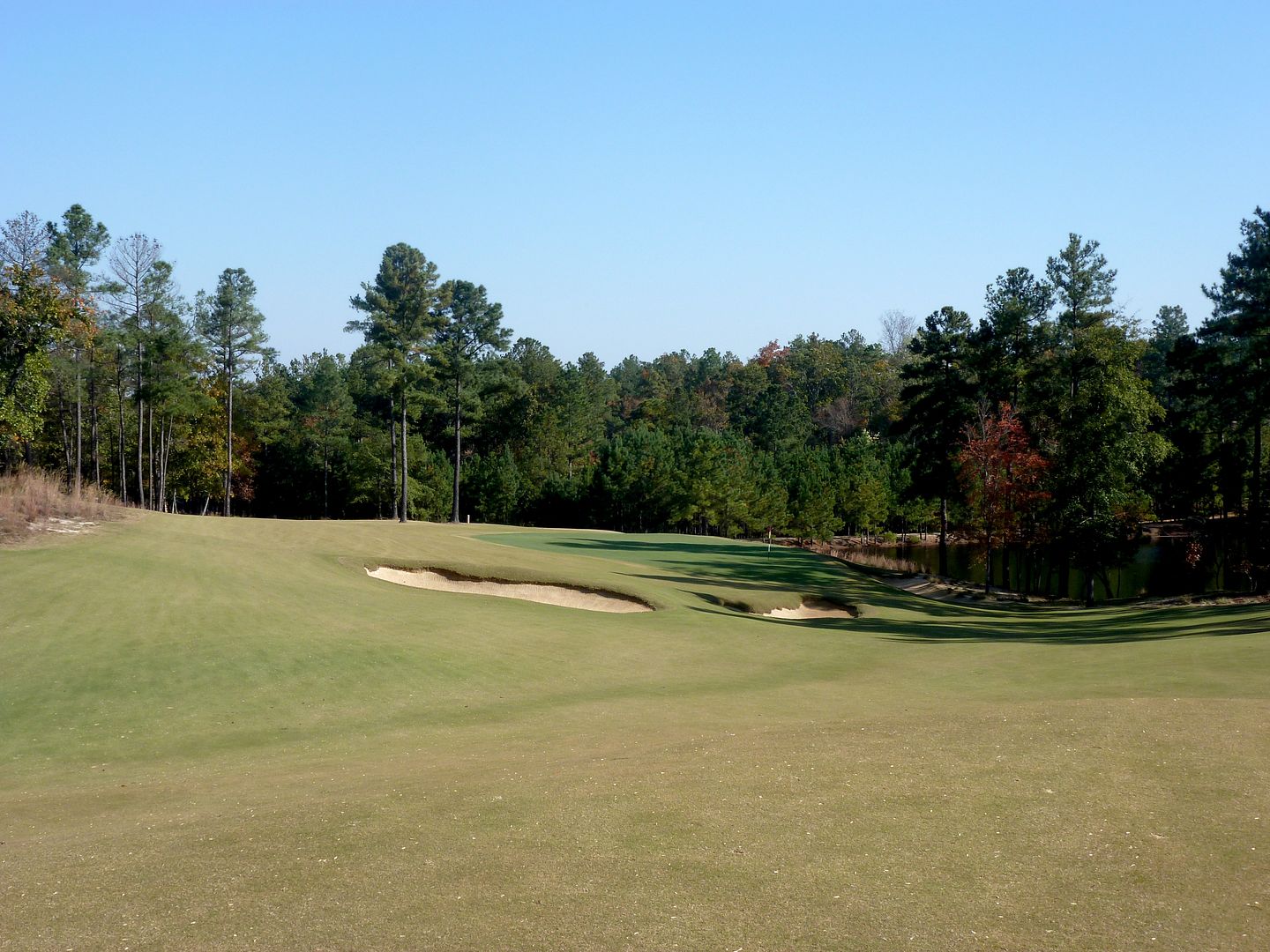
The green slopes very significantly from left to right. The location of the short greenside bunker is nasty -- one shouldn't find the bunker this far short of the green, but if they do they are faced with a bunker shot that requires a long carry to reach the green and a false-front that will funnel bulls off the green.
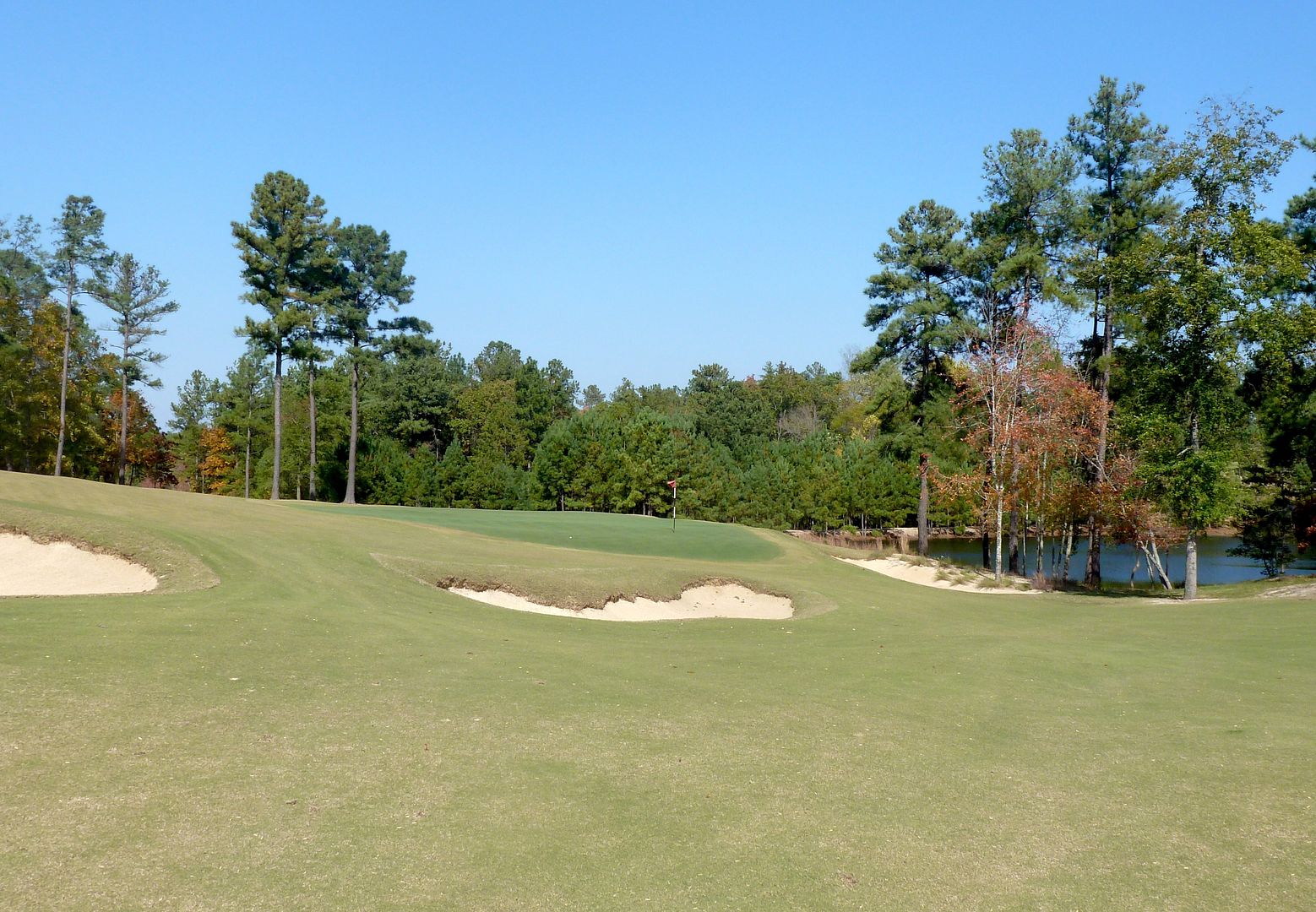
There is not a lot of internal contour on the 4th green, but more importantly there is some counterslope on the right side of the green that will protect balls using the slope to the left from running off the green.
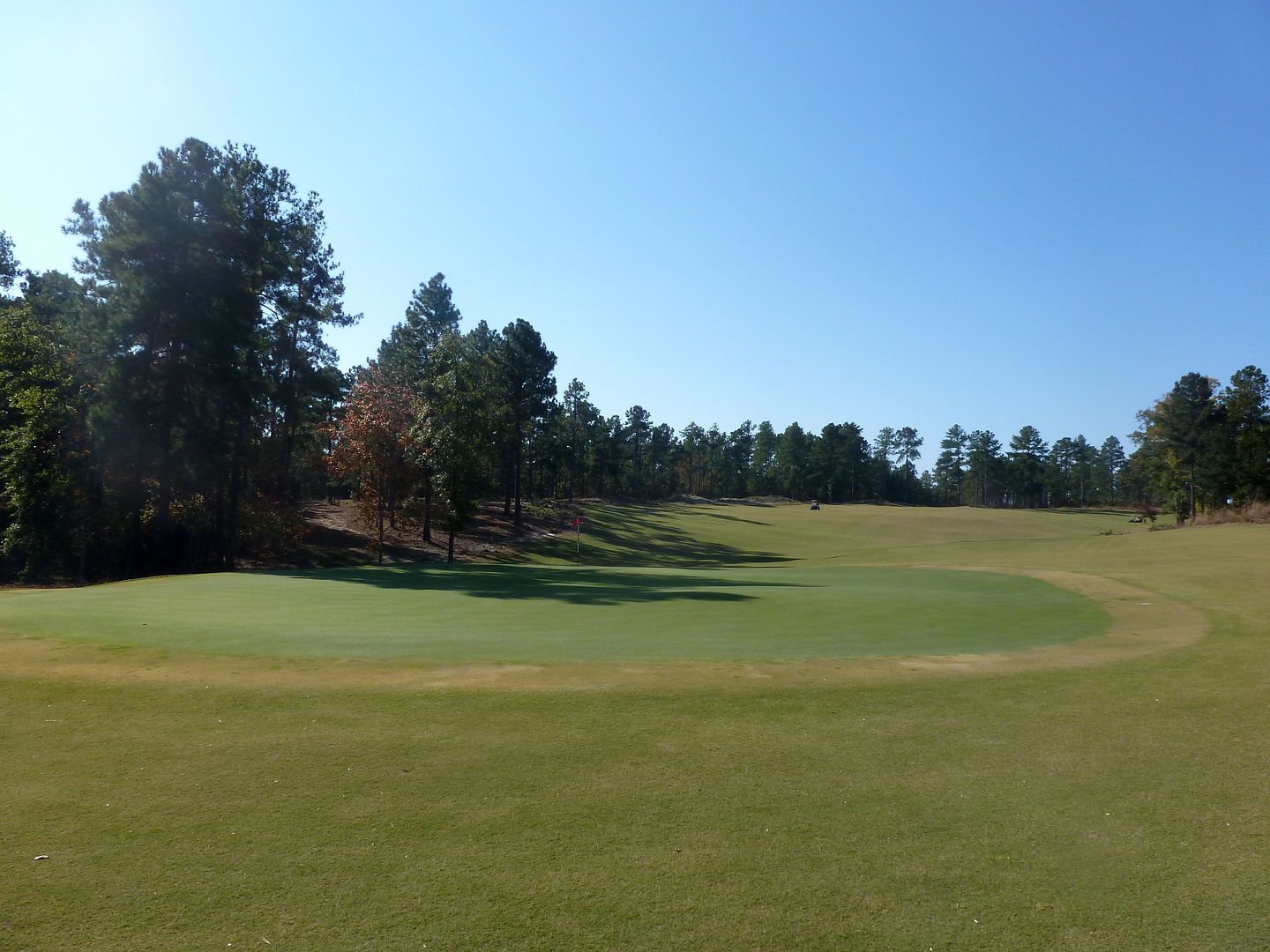 Hole 5: Par 4, 435 Yards
Hole 5: Par 4, 435 YardsThe tee shot is more visually intimidating than difficult. It is only about 200 yards to carry the water on the longest line. Still, I'm told, the middle tees are often moved to the other side of the hazard making this play as a sub 300-yard par 4. Ideally tee shots will be played up the left side of the fairway, though there is no large advantage.
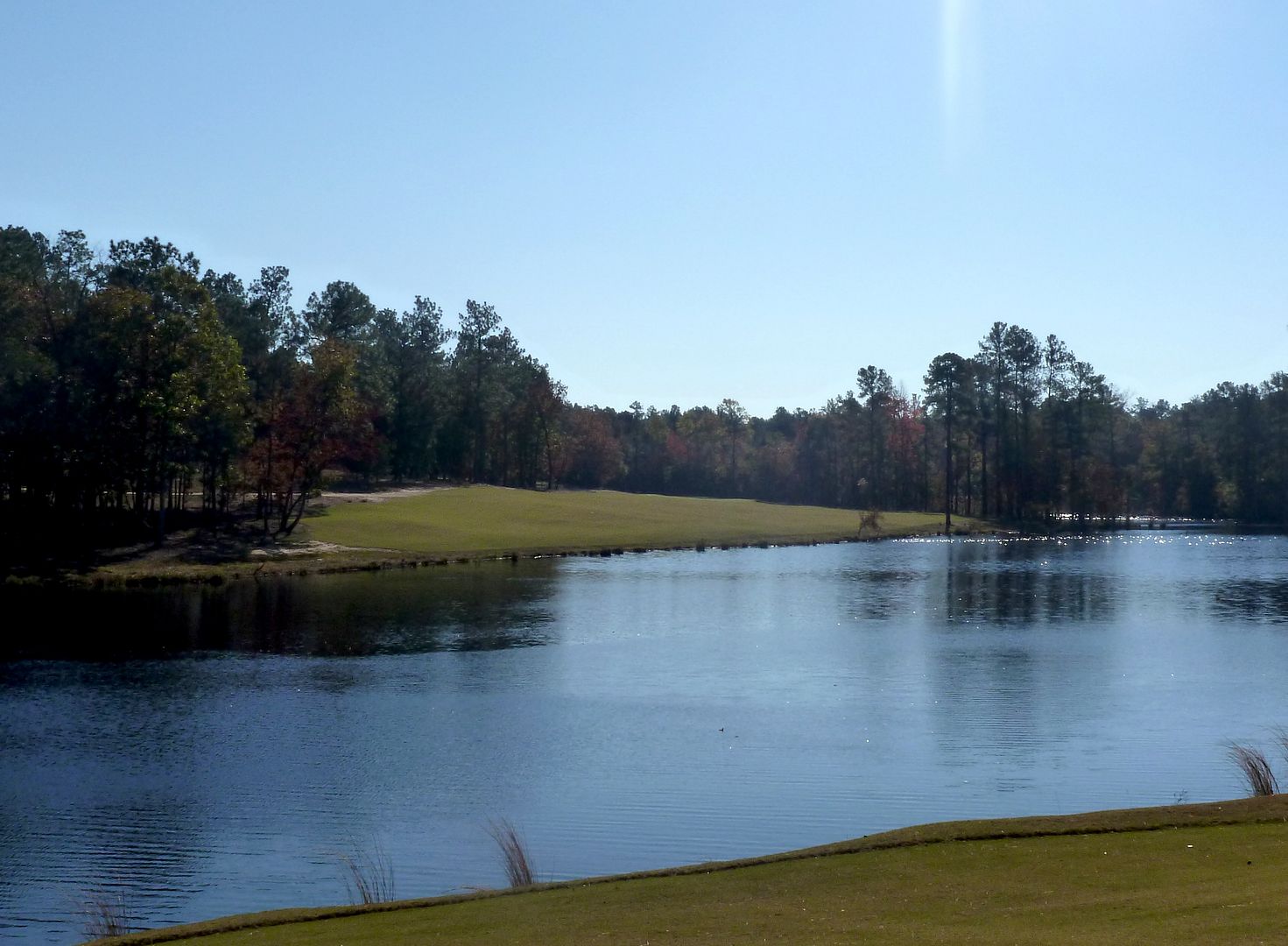
The approach is fairly straightforward. The green is open in front and guarded only by a couple of bunkers to the right. The green slopes generally from front-left to back-right and calls for a shot to be landed short of the green. As I recall there is a significant ridge bisecting the green into front and back sections and a large hump on the right side of the green complicating putts that are played from the wrong side of the ridge.
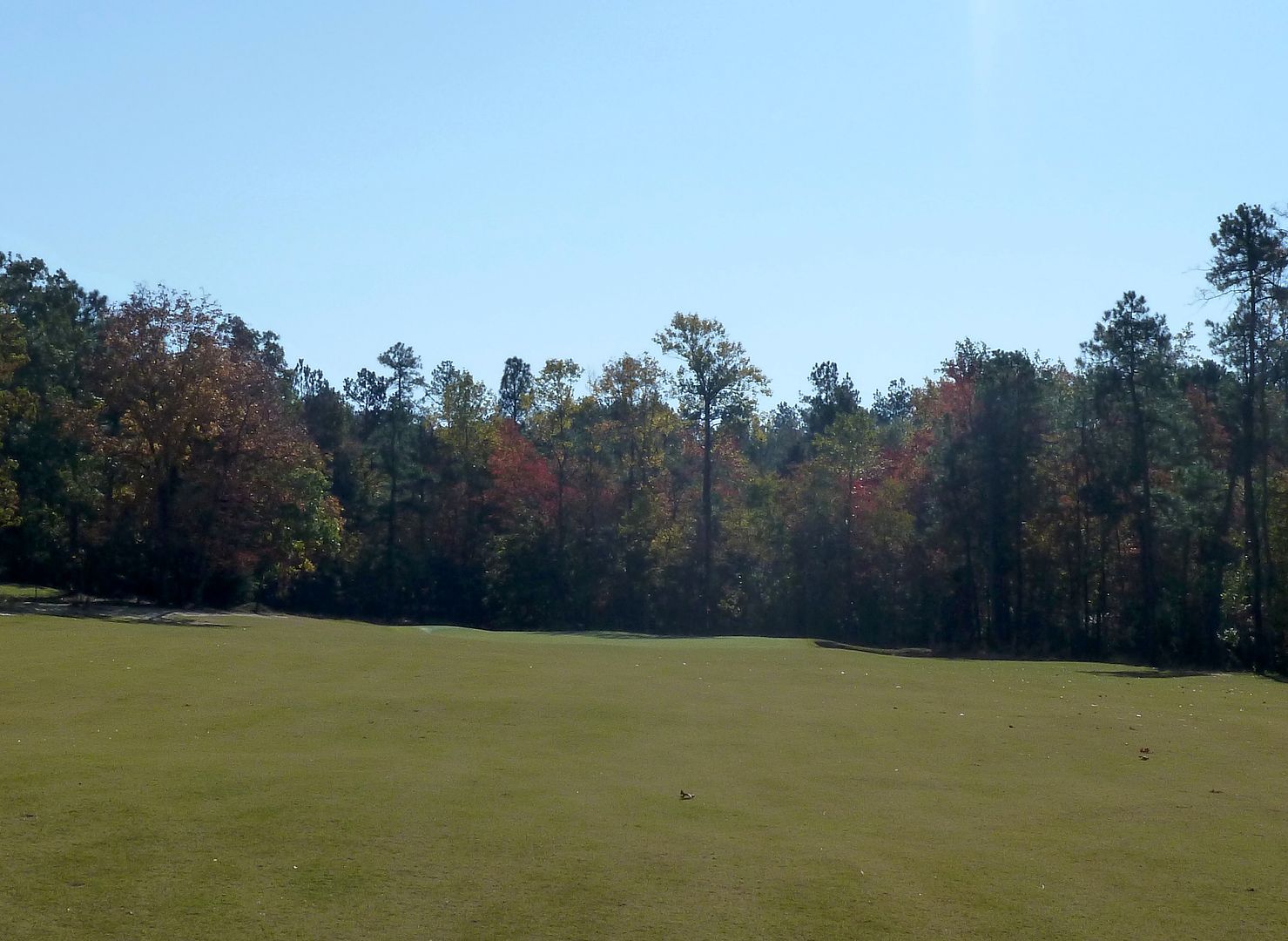 Hole 6: Par 5, 532 Yards
Hole 6: Par 5, 532 YardsWidth! This fairway must be 100 yards wide. Though it isn't obvious, the ideal line is just inside the right edge of the bunker (about a 230 yard carry). Players not willing the challenge the bunker have the option of playing up the left. The hole feels like it should play very long, once the player crests the hill it is downhill all the way and will be within reach in two for many players.
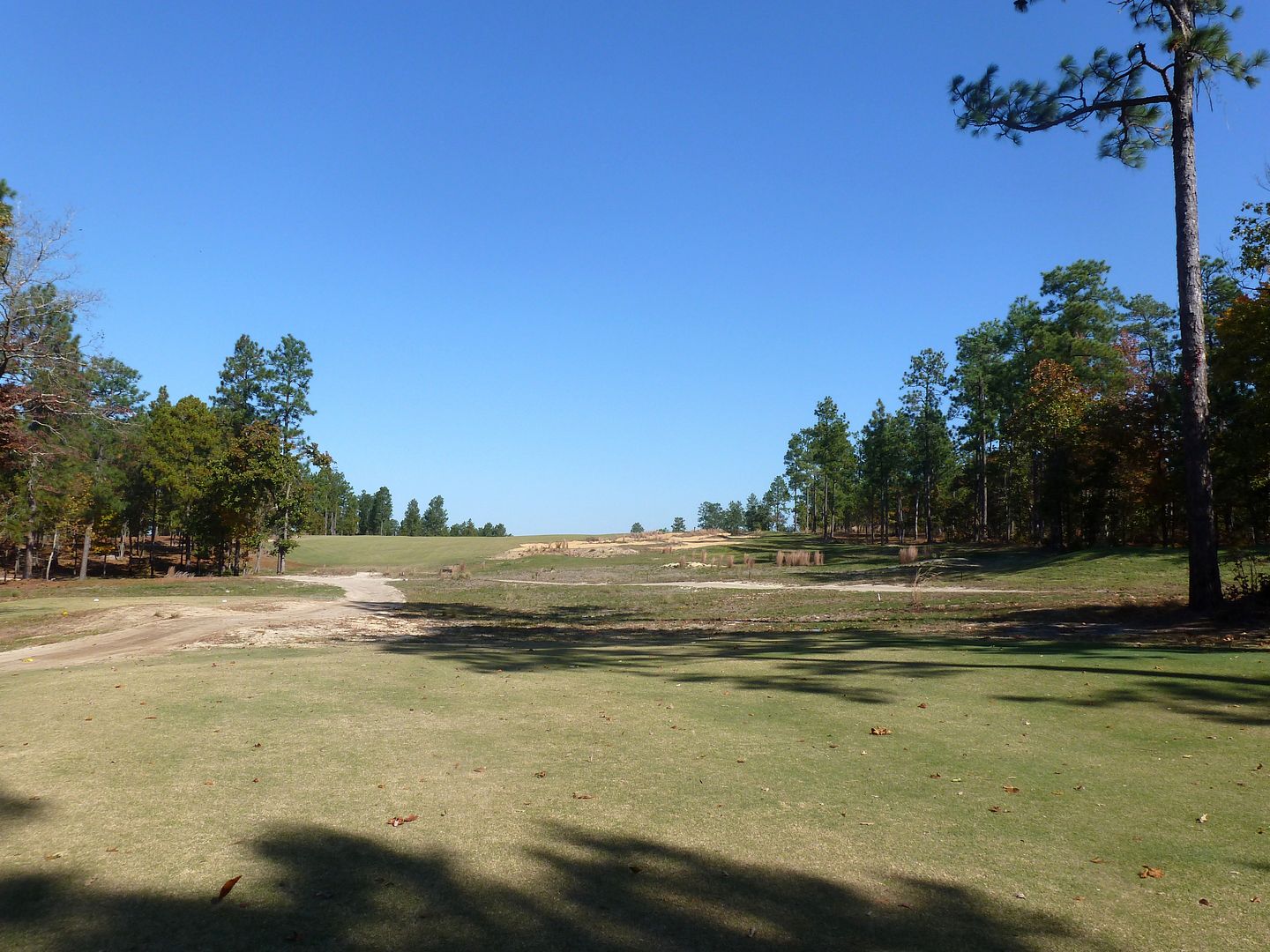
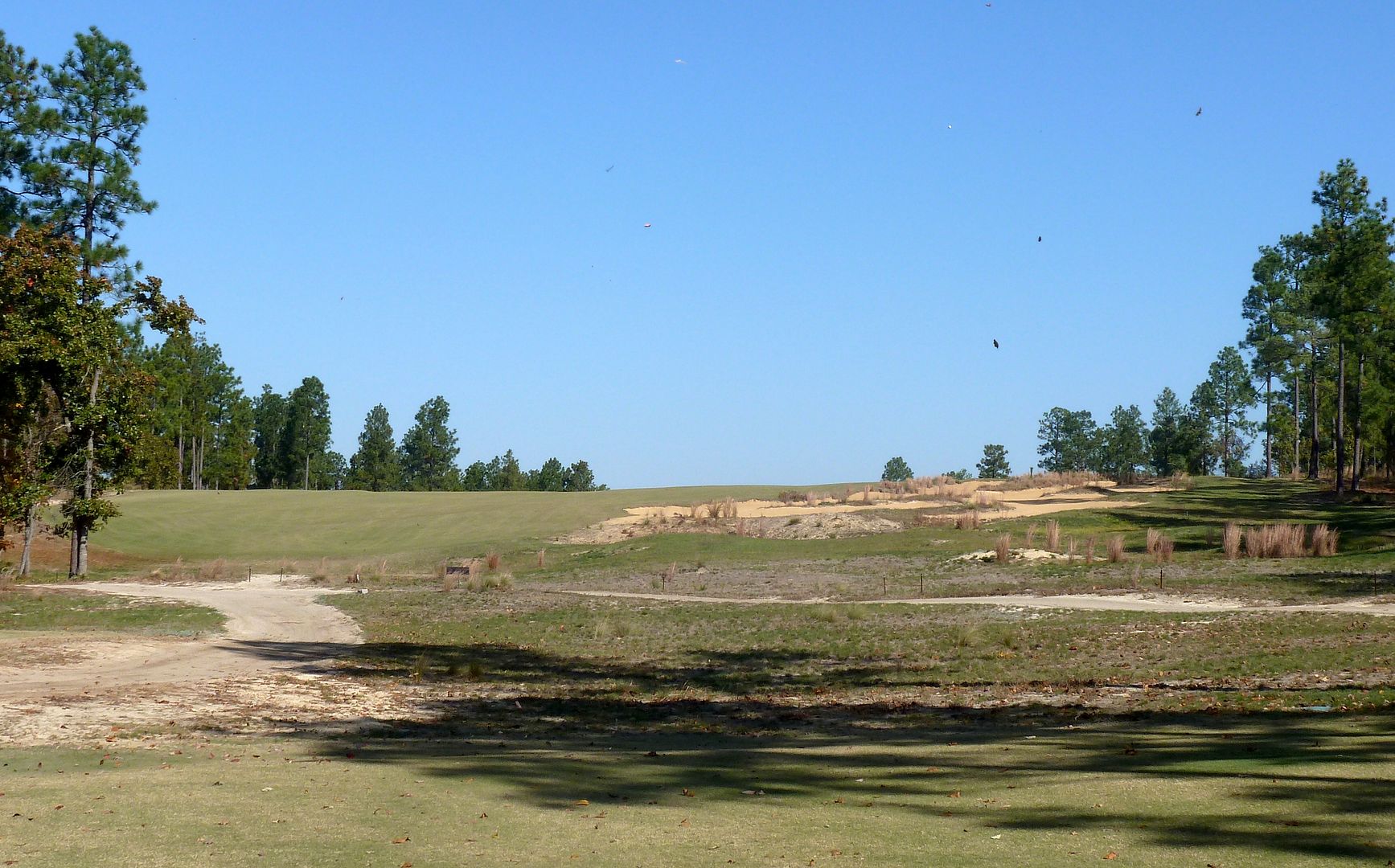
Tee shots played up the right side of the fairway will not have to deal with a pesky (cleverly-placed) bunker 50 yards short of the green.
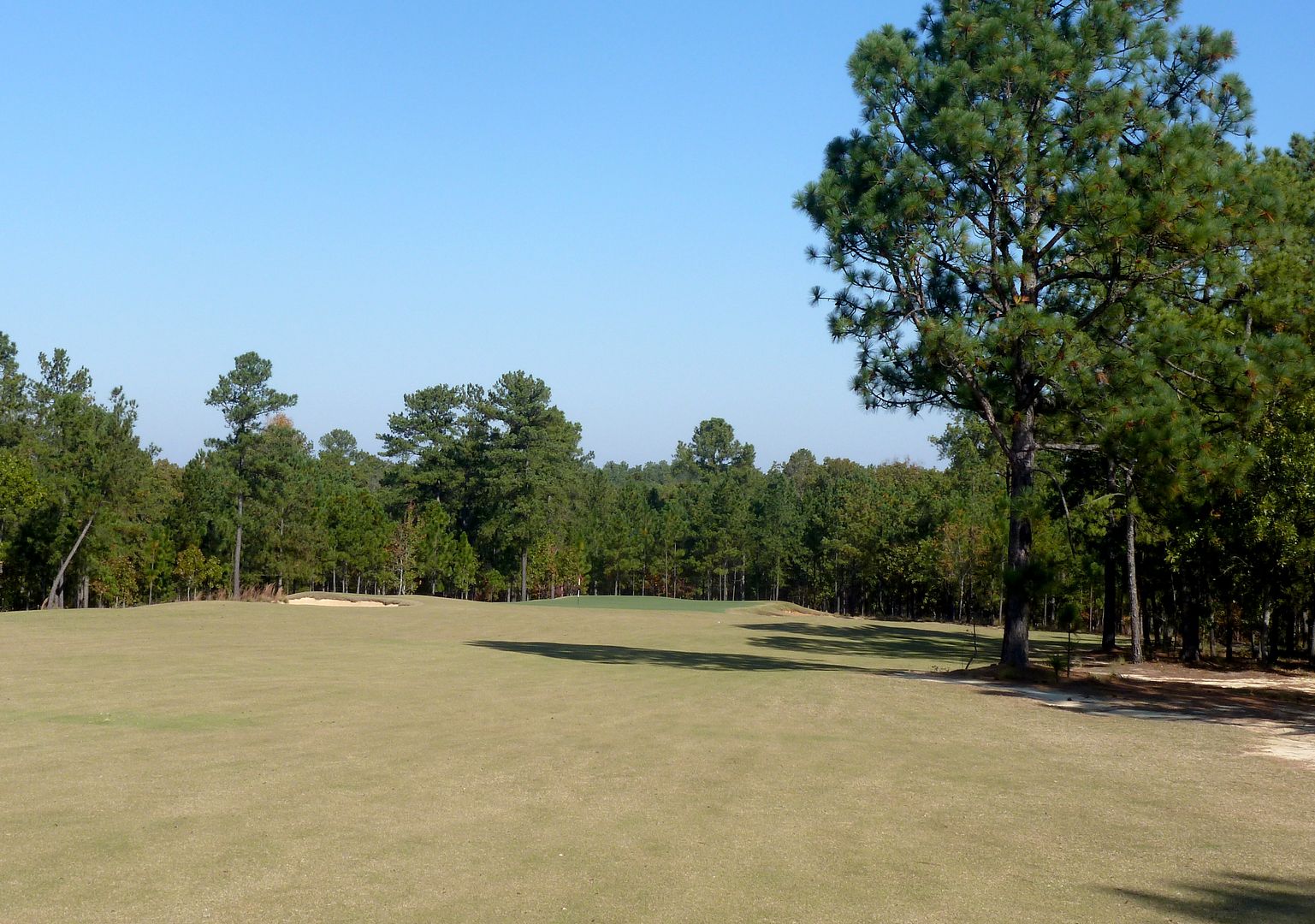
Now this is a green that begs for the ground game. It is wide open in front and slopes significantly from front-to-back. Playing from 250 yards out, my caddie said I should play a 210 yard shot and let the ball trundle down to the green -- once the ball gets on the green it's amazing how fast it is. The front pin pictured looks easy, but in fact may be the most difficult.
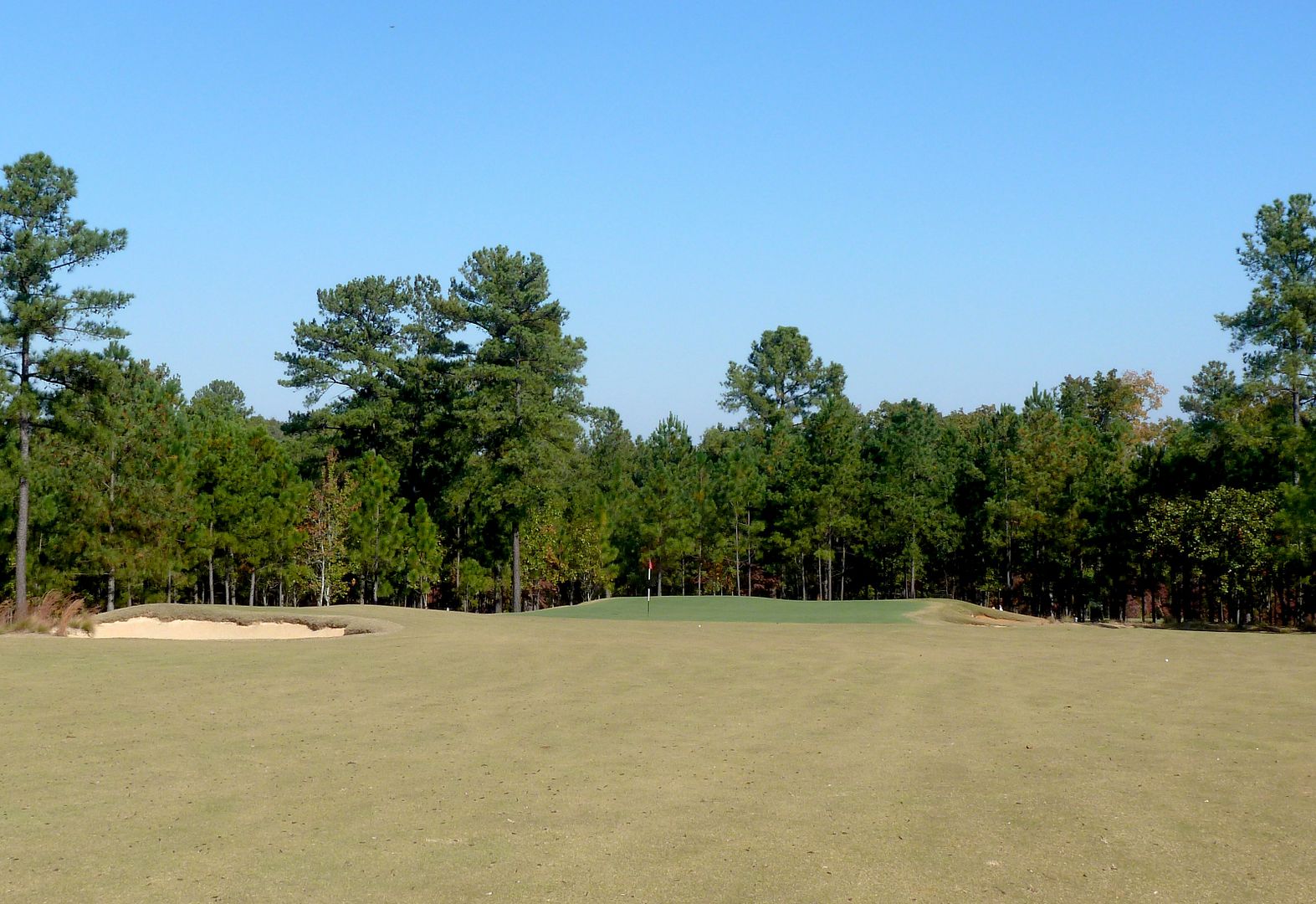
Interesting and nasty scar bunkers left and long of the green.
